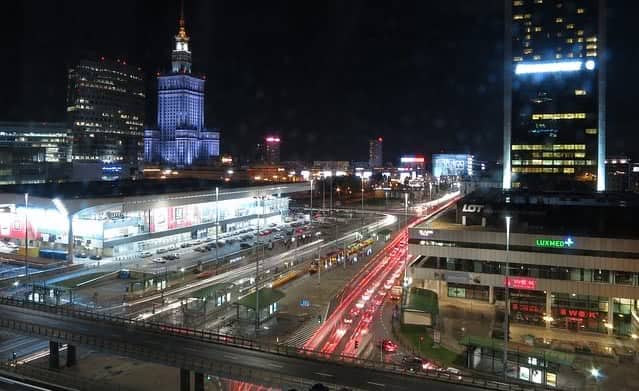Norway: Country Profile
Norway is a Nordic country in situated in the Northwestern part of Europe. Its territory is composed of the western and northernmost part of the Scandinavian Peninsula. Norway is a unitary sovereign state with a typical constitutional monarchy. The powers of the state are constitutionally divided between the parliament, the cabinet and the supreme court. Presently, the House of Glücksburg is in power with Harald V as the current ruling King of the country. As for the Prime Minister, the Conservative Party with Erna Solberg is in power since 2013 (was reelected in September 2017). The country has simultaneous political and administrative subdivisions on center and municipality levels. Such a peculiar power distribution and the administrative arrangement have given shape to such a country that stands out exceptionally in terms of growth and development.
The primary ideals of planning are derived from the egalitarian model. The country maintains the Nordic Welfare Model, which focusses on universal healthcare and a comprehensive social security system. Norway has a chunk of its economy in key industrial sectors. Also, it has extensive reserves of petroleum, natural gas and minerals. According to the World Bank and IMF lists, Norway has the fourth-highest per capita income in the world. The country has the highest Human Development Index ranking in the world. It holds that position since 2009; earlier also holding it between 2001 and 2006.

Related: Latest technology trends in urban planning
Brief History of Development
Norway has undergone a gradual shift in power that has shaped its typical development. Various planning stages can be better explained once the background of the present-day constitutional monarchy is understood. Following are the phases that date back in the history which has given shape to the current set-up of the country:
- Civil war and peak of power- starting off with 18thcentury
- Union with Denmark- early 19thcentury
- Union with Sweden- late 19thcentury
- Dissolution of the union- early 20thcentury
- First and Second World Wars- 20thcentury
- Post-World War II- post 20thcentury
Norway was typically neutral during the First World War (1914-1918). It remained the same until 1940 when it was attacked and invaded and further occupied by Germany (until the end of Second World War). Post-war, the government of Norway started a program inspired by Keynesian economics. It emphasized the state-financed industrialization and promoted the co-operation between trade unions and organizations of their employers. The state-controlled the economy through many measures.
Translating into Planning Phases
Adaptation Planning
Adaptation planning on literal terms means the development that leads to the explosive growth of cities. There is a legal distribution of land with respect to the demarcated lines. The ideals of infrastructure and public health and educations occupy the central stage in the adaptation planning phase.
The phase of Adaptation Planning in Norway started in the 19th century when the unions formed separately with Sweden and Denmark. Earlier Norway kept its constitution liberal and limited the powers of its own independent institutions. Napoleonic Wars caused a recession. And this slowed down the economic development of Norway until the economic growth finally began around 1830. In 1850, there came Marcus Thrane- who was a Utopian socialist. He supported the laboring classes in order to promote a better social structure which signified a bottom-up approach of development. The formations and re-formations continued till 1905 when finally, Norway became a complete independent nation-state. The Republic of the country paved way for the administrative, political and economic progress.
Containment Planning
Containment Planning, by its name, refers to the planning which sees the city as a social organism. It lays down on the objective of providing infrastructure and services to the population. It also highlights the importance of a definite framework which clearly defines the responsibilities of the state.
Such a radical phase of Planning occurred after the irregularities caused after the first world war. This called for a definitive framework to take forward the development of the country. The impositions which were made during the war still continued. Price control and rationing of public housing and vehicle purchase continued till the late 20th century. The cities experienced a boom in their growth in the prevailing time. Thereafter, Norway became a founding member of the European Free Trade Association (EFTA). Issues of social security, high taxes, industrialization, and feminism started occupying the central stage.
Development Planning
Development planning calls for comprehensive planning techniques which involve coordination among different departments and specify unique responsibilities of the state in the development process. Also, economic development holds a very important place in this phase of planning.
The surfacing of various issues all at once called for a transformative change in the country. The social and economic aspects of urban development started being considered and reinforced with an integrated development policy which leads to solving of spatial, social and economic problem areas in the national context. Industrial revolution became the major catalyst of development. With evolution, the planning is now viewed as a predictable process. This has brought the country to the epitome of development. The present-day Norwegian economy is a mixed economy, a prosperous capitalist welfare state, and social democracy country. It features a combination of free market activity and large state ownership in many key sectors.
The Future Possibilities
The earlier years saw a vey fast development. The fight for being an independent nation-state, made the country physically, socially, politically and economically capable so as to gain the public support. The new development measures that the world follows are looked upon benchmarking such countries. Trailing the past, the current inclination of the nation-state towards the comprehensive development is supposed to be the most fruitful step for the future.

And as of now, we have started paying much attention to sustainability. The idea of making a resilient environment, that is less susceptible to climate change impacts and more responsive to the economy, is a major topic of discussion these days. Various future initiatives on the national upfront have brought in political and public awareness about the SDGs in Norway. Moving forward, the country is idealized being the best match of the objective criteria of sustainability. The future expansion in the economy, which in harmony with nature and its resources, can be identified as indicators of the new emerging planning stage.
References
- Initial Steps Towards the Implementation of the 2030 Agenda.(July 2016). New York.
- Department of State: 2014 Investment Climate Statement: Executive Summary.
- https://en.wikipedia.org/wiki/Norway.
- Classroom Lecture on“Introduction to Development Planning”.
Also Read: Land pooling- Is it an answer for land acquisition afflictions?